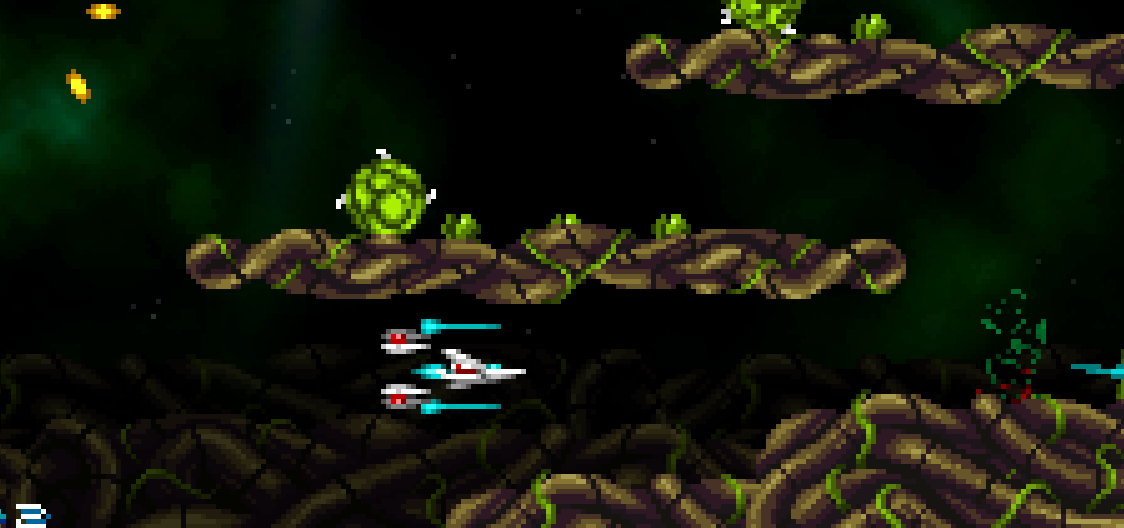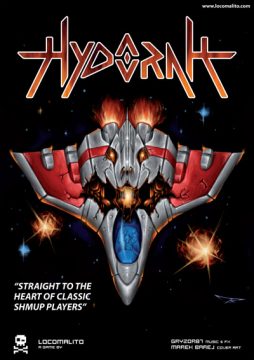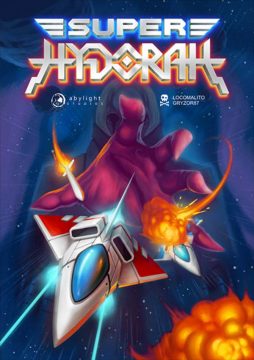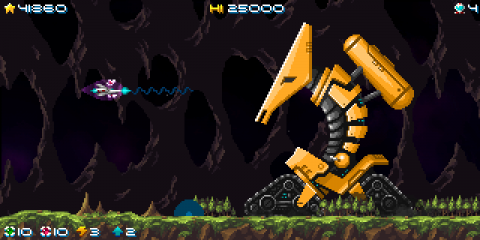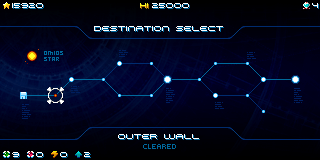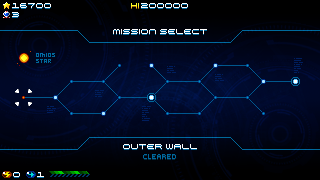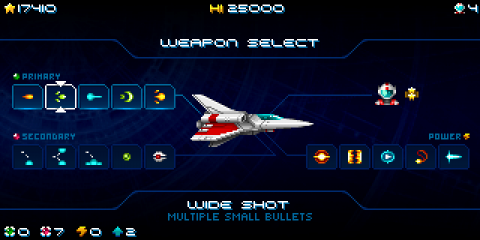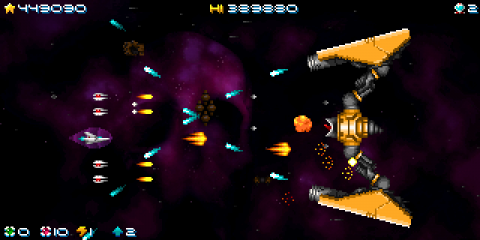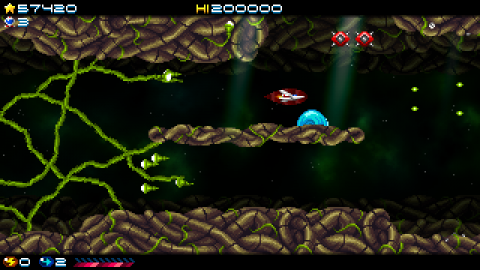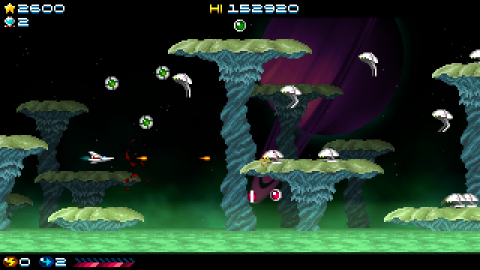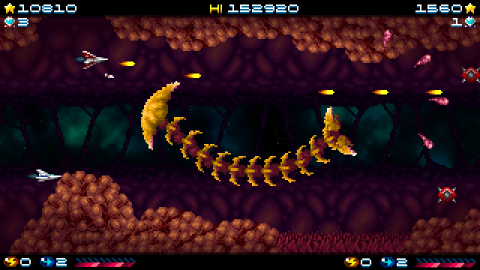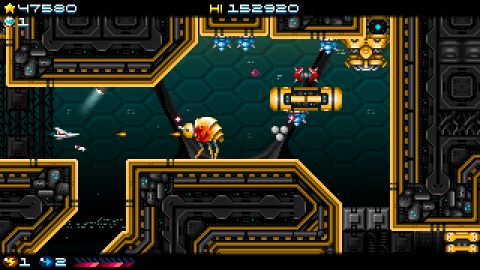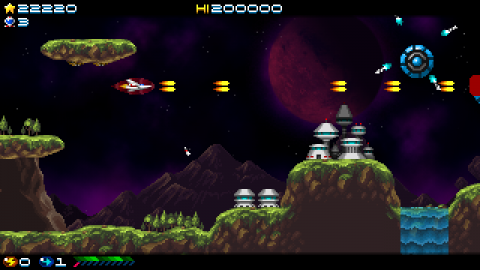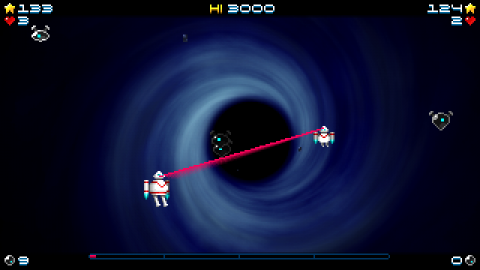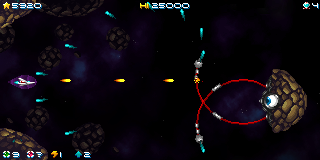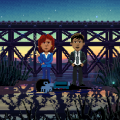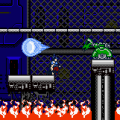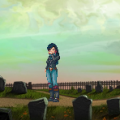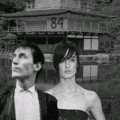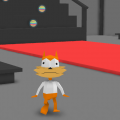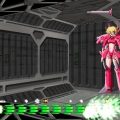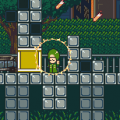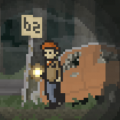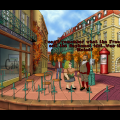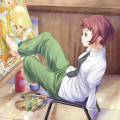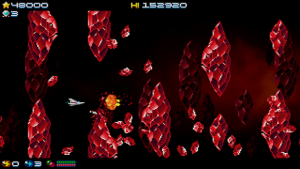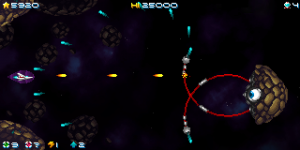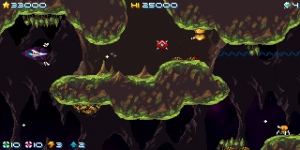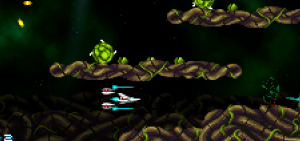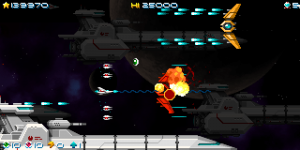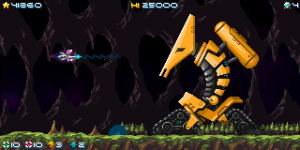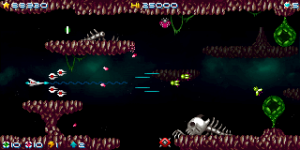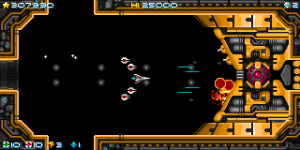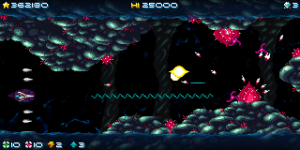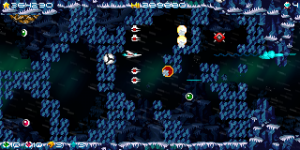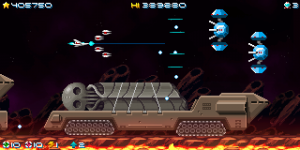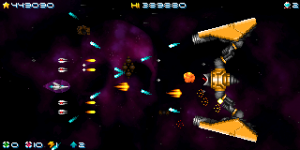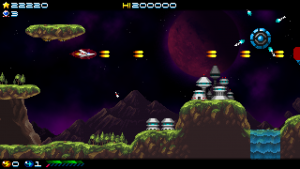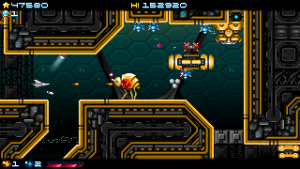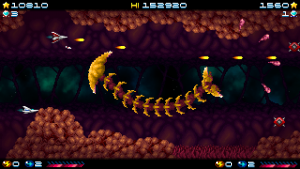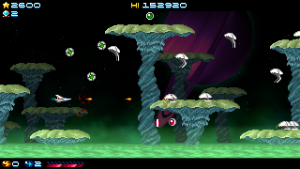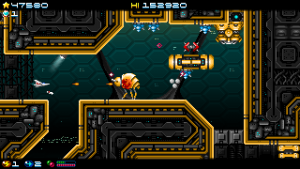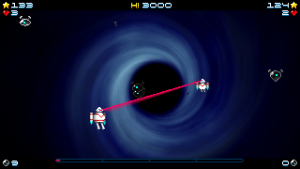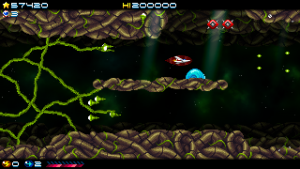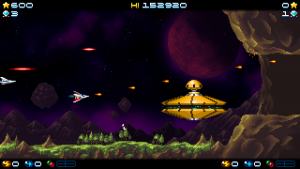Locomalito is an independent game developer based in Spain with a huge passion for classic video games. Hydorah, initially released for Windows in 2010, then reissued in 2017 as Super Hydorah for multiple platforms, is his homage to classic Konami shooters, particularly the Gradius series.
The basic design and concept are patterned closely after Konami’s Gradius series, however, it also takes inspiration from several other classic game sources. In spite of its obvious influence though, Hydorah is very distinctly its own entity, drawing upon their mechanics and tropes but doing its own thing with them. The visual quality is roughly on the same level with the 16-bit games, although there are some sprite scaling and rotation effects, along with other fancy techniques that were not used in Gradius games of the era. It features a widescreen view, making the playing field much larger than the typical arcade game, which takes some getting used to. The story is simple: you pilot a fighter ship named the Delta Lance against the evil Metroptian empire.
There are a total of 16 stages in the freeware release, with five more added to Super Hydorah for 21 stages total, all connected with a map. At various points, the paths diverge, leading to a different set of levels, plus some optional stages. There are two endings, with the second obtained if you complete everything.
You’re only equipped with a standard gun at the beginning of the game, but as you progress through the levels, you automatically obtain new equipment. These are divided into three categories – primary (guns and lasers), secondary (typically missiles) and power (a very powerful attack, which is limited in number). There are also various types of power-up orbs, dropped by colored enemies. One type cycles between red and green, which strengthens primary and secondary, respectively, up to level 10. In the original release, another type cycles between blue and orange, which grants a speed-up or a power attack. Also found are purple icons, which gives you a shield, and hearts, to bestow an extra life. In Super Hydorah, this is changed slightly so that these power-ups cycle between blue, orange, and purple, so it’s easier to find shields, which were relatively uncommon in the original release.
The basics seem very similar to Gradius, but the balance is substantially different. For starters, Options (called “skorts” here) are classified under the “secondary” bracket, which means that if you equip them, you won’t get to equip any missiles. They work differently from Gradius Options too, in that they hover above and below your ship and fire their own weak weapon, rather than the main weapon. However, they can be moved near the front or back by moving in a direction, and can also be used to absorb bullets. Because of this major change, you can never become too overpowered like you could in Gradius.
However, there are still some other minor balance issues, particularly because the speed-up is given the same level of importance as a special weapon attack, which is generally much more preferable. The default ship speed is decent though, so they’re not required. Many of the early bosses can be killed very easily with a well placed special attack or two, if you’ve managed to grab any during the stage. However, it still borrows the checkpoint system of Gradius, so expect to be sent back to the beginning of a given area when you’re killed.
The stage designs should be familiar to Gradius fans, though there are some original concepts. The first level boss, an asteroid with tentacles and a single eye, recalls the Golem from Life Force, though its attack pattern is almost exactly the same as the crystal ship from Gradius II. The underwater cavern level encloses you in a tunnel, with water flowing both above and below you, similar to the volcano level in Gradius IV. A snow level features crystals similar to the regenerating organic matter from the first stage of Life Force, while the ruby level found in Super Hydorah is similar to the classic crystal area in Gradius II. There also is a boss rush level, with future foes visibly lurking deep in the background until they’re called into combat.
Other classic games are referenced too. The level in the insect hive has enemies and music that channel Super Metroid, though according to the developers, the similarity in the soundtrack is just a coincidence. One of the power weapons is the Turriwall, a two-way wave shot based on a similar attack from Turrican. The good ending is also incredibly cool, as it features a mini museum as an ode to all of the shooters and other retro video games that inspired it. There are also small bits of speech throughout, much of which is supposed to be dramatic but ends up sounding a little silly, again recalling so many other Japanese arcade games.
One of the most impressive stages is in the middle of the game, as your ship joins a fleet in a massive fight. You begin fighting alongside your comrades, piloting grey, mechanical ships, as you eventually cross over and begin assault the enemies with their yellow, insect-like features. Eventually you penetrate the core of one of the motherships and fly inside it – like Gradius 2 for the MSX – destroy its defenses, then escape before it explodes. It feels like the penultimate stage of any other shooter, but here, the game’s only half over.
The freeware release uses a rather vexing save system. You’re only allowed to save the game five times, which means you have to prioritize when you should save. If you pick wrong, you might need to replay multiple stages if you run out of lives. While most of the older arcade games didn’t have save systems at all, they tended to allow unlimited continues, often without even sending you to the beginning of the stage, so this aspect feels weird. Super Hydorah is more traditional, in that you can save and resume before any stage, as many times as you want, though you reset your score if you run out of lives (and it keeps track of many times you continue, too).
There are a few hidden things to find in the stages, like a stranded spaceman walking on the floor, or a random pink elephant. In Super Hydorah, there’s something hidden to find in each level. In the freeware release, finding everything also allows you to save an unlimited amount of times.
The soundtrack is provided by Gryzor87, a regular contributor to Locomalito’s games. Unlike the visuals, the music doesn’t channel any specific sound or game, nor does the synth sound like a retro game at all. But its style is still very appropriate for an old-school shooter, and there are really some excellent tunes.
In addition to the extra levels and weapons, Super Hydorah has a few other small fixes too, including two-player simultaneous play, and a separate minigame starring the robot father-and-son found in the main game. It also has better compatibility for newer computers, and a display option to mimic CRT televisions, in addition to various interface tweaks, like an easier-to-read status bar, and some slightly tuned up graphics and sound. It also supports both digital and analog control, for more precise maneuvering.
The instructions in Super Hydorah indicate that this is a dream game for Locomalito. Like his other titles, it’s well-crafted and challenging, but rarely unfair. It’s certainly more worthwhile than anything Konami has produced since Gradius V.
